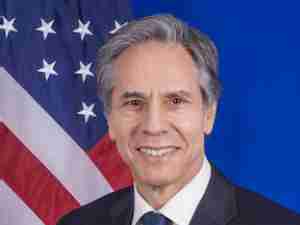The world’s two biggest economies are digging in for what could be a long and bruising trade war, testing the resilience of the strongest global upswing in years.
The Trump administration just after midnight on Monday slapped tariffs on $200 billion in Chinese goods. China responded with duties of its own on $60 billion in U.S. products. The Chinese government also called off planned talks with U.S. officials as the consensus grows in Beijing that substantive discussions will only be possible after U.S. midterm elections in November, according to people familiar with the matter.
U.S. stocks fell as investors faced the grim reality of a protracted trade war between the two powers.
Ignoring the warnings of business leaders and economists, President Donald Trump isn’t backing down from his plan to confront China over what he argues are its unfair trading practices and abuse of U.S. intellectual property. Chinese President Xi Jinping is refusing to bow to U.S. aggression, preparing stimulus measures to cushion the impact on the Chinese economy.
The hardening rhetoric is increasingly giving way to actions that are hurting the world economy, Fitch Ratings said in its latest global outlook.
“The trade war is now a reality,” Fitch chief economist Brian Coulton said in the release. The ratings firm downgraded its world growth forecast for 2019 by 0.1 percentage point to 3.1 percent and warned of further downside risks.
The latest round of U.S. duties took effect on a list of products ranging from frozen meat to television components. Trump has said that Chinese retaliation would spur new duties on another $267 billion in Chinese imports. If the president follows through on the threat, U.S. tariffs would cover all goods the nation imported from China last year, risking an escalating conflict that could upend the supply chains of multinational companies.
China on Saturday called off planned trade talks with U.S. officials, with a move by the U.S. State Department to sanction China’s defense agency and its director on Thursday contributing to the decision, according to people familiar with the situation.
“The door for trade talks is always open but negotiations must be held in an environment of mutual respect,” according to a white paper carried by the state-run Xinhua News Agency. Negotiations “cannot be carried out under the threat of tariffs.”
Efforts at diplomacy have failed, with no breakthroughs since high-level talks began in May. Trump has warned that the 10 percent tariffs on $200 billion in Chinese goods will rise to 25 percent in January if Beijing refuses to offer concessions.
Still, the U.S. remains open to talks, Lindsay Walters, deputy White House press secretary, said in an emailed statement.
“President Trump has an excellent relationship with President Xi and our teams have been in frequent communication since President Trump took office,” Walters said. “We remain open to continuing discussions with China, but China must meaningfully engage on the unfair trading practices.”
Neither side has backed down since the tit-for-tat tariff war began in July when the U.S. imposed duties on $34 billion of Chinese goods. Another $16 billion of goods were included in August and China retaliated in kind to both moves.
“Retailers are already facing a tidal wave of tariffs. This latest tranche is a tsunami,” said Hun Quach, vice president of international trade for the Retail Industry Leaders Association. “With thousands of consumer products included, little warning, and no time to prepare, businesses are left scrambling.”
Beijing’s latest tariffs include an additional 5 percent duty on about 1,600 kinds of U.S. products including computers and textiles and an extra 10 percent on more than 3,500 items including chemicals, meat, wheat, wine and liquefied natural gas.








